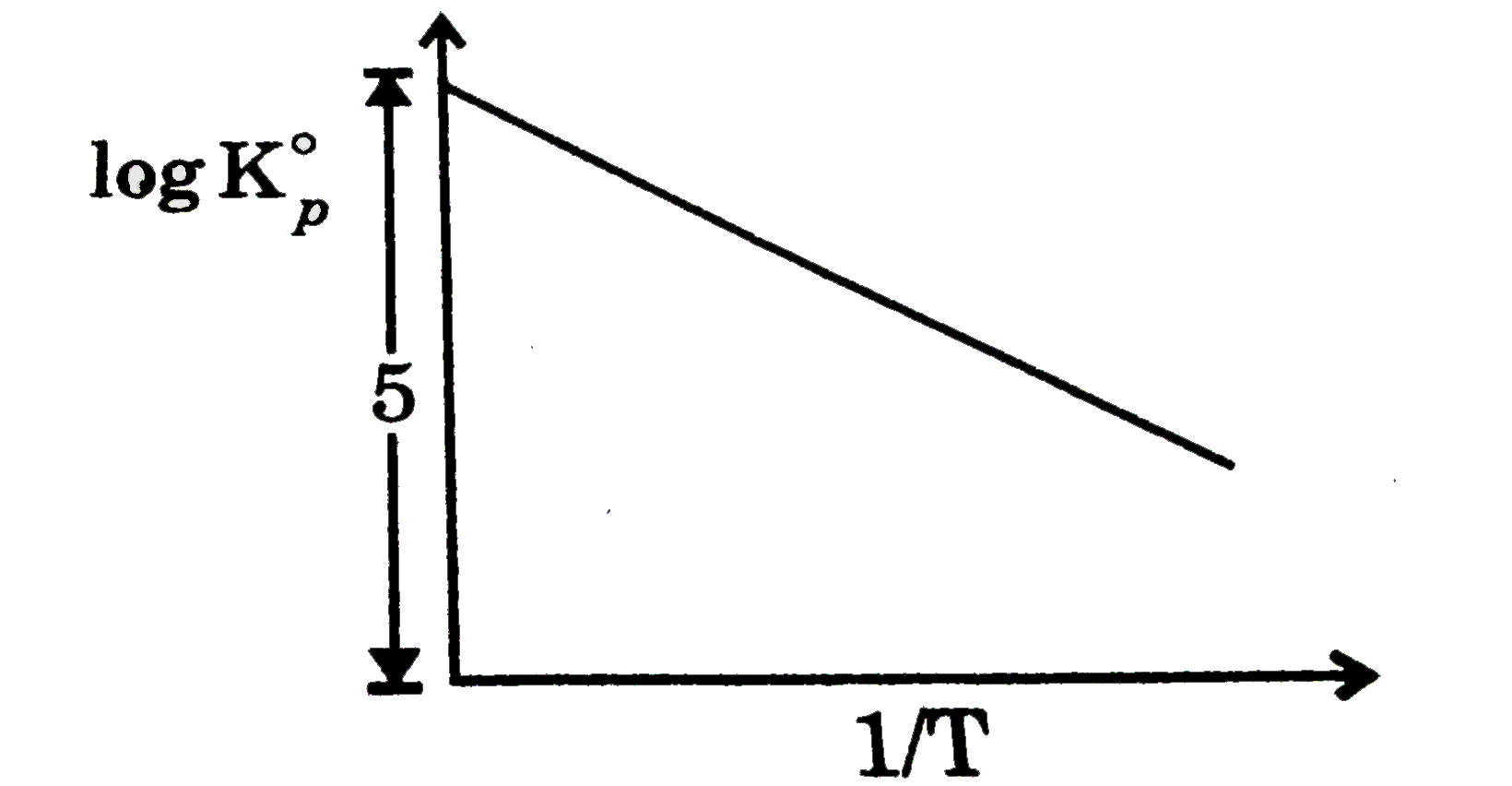For the reaction A(s)→A(g), the variation of log K∘P us 1T is given by:

If S∘m,A(g) is 31.78cal/K mole, then calculate S∘mA(s) in cal/K mole.
The correct Answer is:9
Step by step video, text & image solution for For the reaction A(s) rarr A(g), the variation of log K_(P)^(@) us (1)/(T) is given by: If S_(m)^(@), A(g) is 31.78 cal//K mole, then calculate S_(m)^(@) A(s) in cal/K mole. by Chemistry experts to help you in doubts & scoring excellent marks in Class 12 exams.
Topper's Solved these Questions
- BOOK - GRB PUBLICATIONCHAPTER - GRAPHICAL INTERPRETATIONEXERCISE - Match The Column Type15videos
GRAPHICAL INTERPRETATION
- BOOK - GRB PUBLICATIONCHAPTER - F-BLOCK ELEMENTSEXERCISE - Subjective type7videos
F-BLOCK ELEMENTS
- BOOK - GRB PUBLICATIONCHAPTER - HYDROCARBON (ALIPHATIC)EXERCISE - Previous years jee questions28videos
HYDROCARBON (ALIPHATIC)
Similar Questions
Knowledge Check
- Question 1 - Select One
Which of the following statement(s) is/are incorrect for a reaction ,A2(g)+B(g)→A2B(g) assuming ideal gas behaviour if ΔH∘R =- 100Kcal/mole and ΔS∘R =−13kcal/ mole K at temperature T=300K.
AThe reaction is at equilibrium when occuredat 1 bar pressure of each gas and 300 K.BNo non-P V work can be obtained from the reaction at 300 K at stander conditionsCIn a rigid container the above reaction will be spontaneious at 300 K.DWhen performed in a rigid conatiner the reaction will be endothermic. - Question 2 - Select One
For the reaction at 298K, A(g)+B(g)→C(g)
ΔE=−5calandΔS=−10calK−1AΔG=+2612calBΔG=−2612calCΔG=+261.2calDΔG=2379cal - Question 3 - Select One
Bomb calorimeters are the devices that are used to experimentally determine ΔH and ΔU of any reaction by measuring the temperature change in the water bath Hence , the experimatal data can be used for cross-checking theortical data, From the following theoretical data answer the question that follow:
Thermodynamic data:
ΔH∘fCh4(g)=−15kcal/mole,ΔH∘fCO2(g)=−90kcal/mole,
ΔH∘fH2O(l)=−60Kcal/mole
S∘mCH4(g)=40cal/mole Kelivn
S∘mO(g)=45cal/mole Kelivn
S∘mH2O(g)=15cal/mole Kelivn
S∘mCO2(g)=50cal/mole Kelivn
Calorimeter data:
(1) Water equivlent of calorimaeter = 36 gm
(2) Sepcific heat capacity of water = 1cal/gm.∘C
(2) mass of water inthe water bath =164 gm
All data at 300 K, R=2cal/mol K .
Calculate rise in temperature of calorimeter if 0.01 moles of CH4(g) undergoes combustion in the above bonb calorimeter at 300 K .A9.18KB9.696KC12KD8.8K
For the reaction 2A(g)+B(g)→C(g)
ΔU∘=20 kcal/mole, ΔS∘=100 cal/kmole at 300 K. Hence ΔG∘ in kcal is __________
[R=2calmol−1K−1]View SolutionBomb calorimeters are the devices that are used to experimentally determine ΔH and ΔU of any reaction by measuring the temperature change in the water bath Hence , the experimatal data can be used for cross-checking theortical data, From the following theoretical data answer the question that follow:
Thermodynamic data:
ΔH∘fCh4(g)=−15kcal/mole,ΔH∘fCO2(g)=−90kcal/mole,
ΔH∘fH2O(l)=−60Kcal/mole
S∘mCH4(g)=40cal/mole Kelivn
S∘mO(g)=45cal/mole Kelivn
S∘mH2O(g)=15cal/mole Kelivn
S∘mCO2(g)=50cal/mole Kelivn
Calorimeter data:
(1) Water equivlent of calorimaeter = 36 gm
(2) Sepcific heat capacity of water = 1cal/gm.∘C
(2) mass of water inthe water bath =164 gm
All data at 300 K, R=2cal/mol K .
1. Calculate ΔUcombustion of CH4(g) at 300 K.View SolutionBomb calorimeters are the devices that are used to experimentally determine ΔH and ΔU of any reaction by measuring the temperature change in the water bath Hence , the experimatal data can be used for cross-checking theortical data, From the following theoretical data answer the question that follow:
Thermodynamic data:
ΔH∘fCh4(g)=−15kcal/mole,ΔH∘fCO2(g)=−90kcal/mole,
ΔH∘fH2O(l)=−60Kcal/mole
S∘mCH4(g)=40cal/mole Kelivn
S∘mO(g)=45cal/mole Kelivn
S∘mH2O(g)=15cal/mole Kelivn
S∘mCO2(g)=50cal/mole Kelivn
Calorimeter data:
(1) Water equivlent of calorimaeter = 36 gm
(2) Sepcific heat capacity of water = 1cal/gm.∘C
(2) mass of water inthe water bath =164 gm
All data at 300 K, R=2cal/mol K .
If calorimeter is modified so as to convert chemical energy into electrical by ensuring that the reaction is occurring at constant pressure then how much electron work can be obtained by combustion of 0.1 mole of CH4(g)?View SolutionFor the reaction.
A(l)→2B(g)
ΔU=2.1 k Cal, ΔS=20 Cal K−1at300K
Hence ΔG in kcal is ?View SolutionFor a reaction 2X(s)+2Y(s)→2Cl(l)+D(g)
The qp at 27∘C is -28 K Cal. mol−1.
The qV is ___________ K. Cal. mol−1 :-View Solution

